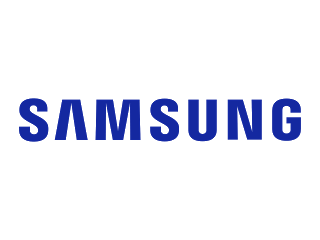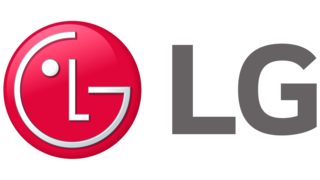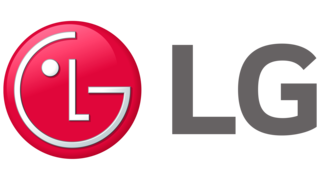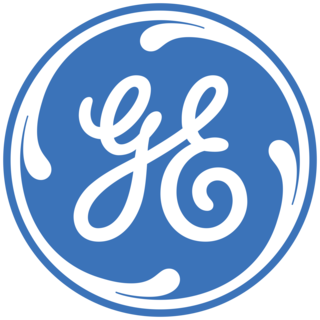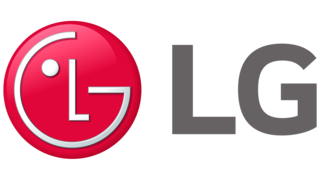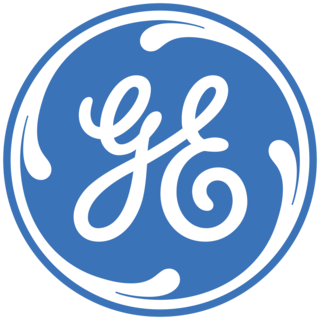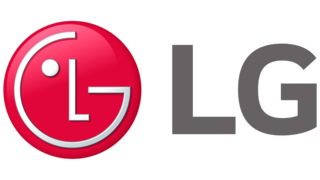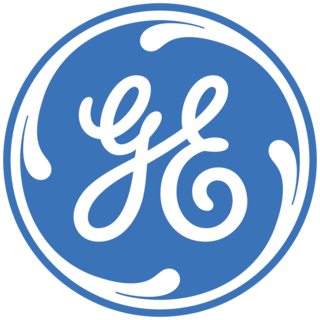8 Best Washers and Dryers of 2022
Washers and dryers have come a long way in style, performance and technology. Having too many bells and whistles, however, isn’t always a good thing, and navigating the vast variety of appliance types, models and brands can be daunting.
Read on for our list of the best washers and dryers and our comprehensive guide to picking the right one for you.
Our Top Picks for Best Washers and Dryers
- Samsung 6.0 cu. ft. FlexWash – Best Front-Loading Washer
- LG DLEX4500B 7.4 cu. ft. Dryer – Best Front-Loading Dryer
- Whirlpool Smart 5.2 cu. ft. 2 in 1 Removable Agitator – Best Top-Loading Washer
- General Electric Profile 7.4 cu. ft. Electric Dryer – Best Top-Loading Dryer
- LG WM4200HWA and DLEX4200W – Best Stackable Washer and Dryer
- General Electric Unitized Spacemaker – Best Laundry Center
- LG WM3555HWA All-in-One – Best Compact Washer
- Black+Decker 0.9 cu. ft. Top-Loading Washer – Best Portable Washer
Best Washer and Dryer Reviews
Whether you’re looking for a full set for your laundry room or a new washer to replace that family heirloom that recently stopped spinning, here are some of the best options in the market right now.
Best front-loading washer and dryer
- Offers extra 1.0-cubic feet washer on top
- Large 5.0 cubic feet main compartment
- Compatible with the SmartThings app
- Steam cycle for better stain removal
- High price (retails for around $1,800)
- Some longevity complaints
Why we chose it: Samsung’s FlexWash technology makes washing small loads easier, faster and more efficient, and can even handle two different loads simultaneously.
The Samsung FlexWash model is a prime example of the tech giant's innovative take on laundry. Its smart capabilities — and SmartThings app compatibility — let you schedule washes, control the machine remotely and receive notifications about cycles ending or malfunctions. It also has a wide array of cycles, which the washer itself can select depending on your frequency of use or its own sensors.
Its main compartment is 5.0 cubic feet — which is already plenty large — and it has a separate washer on top. This top washer has a 1.0-cubic-foot-capacity that's perfect for a small load of delicate garments or single pieces of clothing for a quick cleaning. It can also work simultaneously, so you don’t have to worry if the washer’s already running, just toss in that last-minute shirt.
There used to be some concerns about Samsung’s reliability, but those seem to be a thing of the past. The brand now vies for the top spots in most satisfaction and reliability surveys, including the prestigious U.S. Appliance Satisfaction Study by J.D. Power.
Runner-up: LG Signature WM9500HKA Large 5.8 cu. ft. Front-load Washer
LG’s take on double-load washing machines is different from Samsung, but can also be convenient. Like all LG front-loading washing machines, this one is compatible with the SideKick, a separate pedestal that includes a 1.0-cubic-foot washer. Unfortunately, this additional washer is sold separately. It’s worth noting, however, that LG has even better reliability scores than Samsung in most third-party testing.
- TurboSteam can remove wrinkles and slight odors in 10 minutes
- AI technology detects and chooses the best settings for you
- Expensive, retailing for around $1,300
Why we chose it: LG's reliability, combined with its smart technology and TurboSteam feature, means this dryer has everything you need and more.
LG is one of the dominant players in the appliance market, and the DLEX4500B shows why.
First, it has the smart capabilities expected from a tech name like LG. It’s compatible with the ThinQ app, which lets you control the dryer and check on its status. You can also pair it up with Alexa or Google Assistant, so you can just tell it to start or stop while you’re busy with other chores.
If you own the matching washer, LG's artificial intelligence will detect the size and type of the load and select a cycle accordingly. It will also pre-select a matching drying cycle as well.
This dryer also has TurboSteam, a setting for quickly “refreshing” clothes, which means removing wrinkles or getting rid of slight odors without the need to wash or completely dry them. The process takes only about 10 minutes, so it can get you out of a jam quickly.
Finally, a big reason to consider this dryer is LG’s high scoring in reliability testing and surveys. While tech companies don’t have the best reputation for durability due to a heavy reliance on electronic parts (that can break down quicker than mechanical parts), LG really stands out in this area as well.
Runner-up: Samsung FlexDry 7.4 cu. ft. Smart Electric Dryer
If you want more versatility from your dryer, try Samsung’s FlexWash counterpart: the FlexDry. It has a dryer designed for delicates on top (it works kind of like a grill), so you can avoid damaging those pieces that need special care.
- Removable agitator for gentler impeller wash
- Large 5.2 cubic feet capacity
- Load & Go detergent dispenser can automatically add detergent for 20 loads
- Compatible with Alexa and Google Assistant
- Not as many smart features as competitors in the price range
Why we chose it: Large households need both size and versatility — this Whirlpool 2-in-1 delivers on both fronts and adds smart features as well.
The classic top-loading washing machines have their advantages, including more space efficiency, less risk of mold and easier reach for some people. However, older machines typically used agitators, which are great for removing dirt and grease, but some say can also damage and stretch out clothing. (The newer impellers, on the other hand, are said to be gentler, but might not clean the really tough dirt.)
With this model, Whirlpool aims to improve on a classic with the new removable agitator. This not only expands washing capabilities, but also provides more room for bigger loads.
In addition, the washer has smart capabilities just like other competitors from the big tech brands. First, its Adaptive Wash Technology detects the size and type of clothing in order to adjust water levels, soap dispensing and wash style. It’s also Alexa- and Google Assistant-compatible, which allows you to control cycles remotely.
Runner-up: LG WT7150CW 5.0 cu. ft. Top-load Washer
For a more budget-friendly option in the same size range, check out this LG model. It ranks high in reliability testing, it’s water- and energy-efficient, and its TurboDrum technology provides top-notch washing performance.
- Very quiet operation
- Quick Dry setting dries clothes in under 25 minutes
- Downloadable cycles via the SmartHQ app
- Some reviews cite durability concerns
Why we chose it: Despite its low $700 price tag, this GE Profile dryer has style and a wide array of smart features that can bring a top-load set up to modern standards.
This GE model, from the brand’s Profile series, brings a refined twist to a classic look, especially in the control panel.
It has a fair number of smart features, such as compatibility with GE’s SmartHQ app, with which you can monitor, schedule and control the dryer (as well as a matching washer).
You can also find different cycles designed for different types of fabric and stains in mind. If you find yourself using some of these regularly, you can save those settings on the dryer itself for easy access.
Other features, such as Sensor Dry, vent blockage alerts and sanitizing cycles, are also included, as well as a Quick Dry setting to dry clothes in under 25 minutes.
Runner-up: LG DLE7150W 7.4 cu. ft. Ultra Large Capacity Electric Dryer
If you want more simplicity, check out this LG dryer. For under $800, you get a 10-year warranty, Sensor Dry technology and SmartDiagnosis compatibility. Unfortunately, it doesn’t link up to LG’s ThinQ app, but it’s a great product nonetheless.
- Stackability and reversible doors help it fit in any laundry room
- TurboWash and TurboSteam for reduced wash times
- ThinQ smart app compatibility
- Can be paired up with LG SideKick pedestal for extra washing space
- Smaller than other LG offerings
Why we chose it: The LG WM4200HWA washer and DLEX4200W dryer combo offers exceptional value, providing all the smart perks and reliability of LG for around $1,000 each.
LG’s catalog of smart capabilities and proprietary features is extensive, which can sometimes make choosing a model a bit overwhelming. However, if you’re looking for value, this pair can deliver on all fronts.
Both offer very large capacity, with 5.0 cubic feet for the washer and 7.4 cubic feet for the dryer. The washer is also compatible with the SideKick pedestal, a separate 1.0-cubic-foot washer for extra loads. The laundry pedestal for the dryer provides storage space too.
They’re compatible with the ThinQ app and all its perks, from scheduling washes to Alexa and Google Assistant compatibility. You can monitor cycles as they run and get maintenance updates. They also incorporate sensors and artificial intelligence (as LG calls it) to choose the optimal cycles for both the washer and the dryer.
This model also ranks highly in third-party testing. Additionally, LG offers the speedy TurboWash, along with the dryer’s TurboSteam, for those last-minute loads. The washer is also AAFA (Asthma and Allergy Foundation of America) certified and has an “Allergiene” Cycle that uses steam to remove pet hair, dander and other allergens.
Lastly, LG’s 10-year warranty on the motor and drum, makes the brand a solid option for those looking for modern features without sacrificing durability.
- Separate dials for each appliance which can provide added durability
- PreciseFill technology uses water efficiently
- Wi-Fi can be added
- Short on smart features
- Not as sleek-looking as more modern models
Why we chose it: When buying a 2-in-1 appliance like this one, simplicity and reliability are crucial, and veteran company GE provides that along with some welcome perks.
For some, the laundry center — that towering appliance with a washer on the bottom and a dryer on top — might feel like a thing of the past. However, these can be pretty convenient for anyone who is short on space and for those who prefer more traditional appliances without too many bells and whistles.
This GE Unitized Spacemaker is the perfect example. The dials are mechanical instead of electronic and, most importantly, separate for each appliance. This can be an advantage — if one of the appliances, or the control panel itself malfunctions, it’s highly probable that you’ll still be able to use the other.
The Spacemaker’s washer measures 3.9 cubic feet, and the dryer 5.9 cubic feet — this is more than most compact washers and dryers, and enough to fit a decent amount of clothing and bedding.
It’s not all old-school, either. It’s EnergyStar-certified, has an impeller instead of an agitator, and has PreciseFill technology for increased water efficiency. You can also buy the ConnectPlus accessory, easily found on Amazon, to enable remote monitoring.
It’s a bit expensive at $1,699, but you’re still getting two appliances in one, with the possibility of Wi-Fi connectivity, water and energy savings, and that old-school reliability your parents always talk about.
Runner-up: LG Single Unit WashTower 4.5 cu. ft. Washer and 7.4 Dryer
If you’re married to the idea of a single unit laundry center, but want all the modern perks of high-tech washers and dryers, LG has you covered. This WashTower has Sensor Dry, smart detergent dispensing, a sleek control center and it’s compatible with the extensive ThinQ smart app.
- Very small 24" footprint
- Lower price than similar machines
- Compatible with the ThinQ smart app
- All-purpose appliances don't have the best reputation for durability
Why we chose it: If you need a compact washer, chances are you also need a compact dryer; this All-in-One from LG provides both while taking less space than most dedicated washers.
If you live in a small apartment or a tiny home, you know every inch is gold — and, unfortunately, appliances usually hog a lot of space.
However, with dimensions of 33” x 24” x 22” and a ventless design, this LG washer fits virtually anywhere. Not only that, it works as a dryer, so you only need one spot for both appliances.
It has all the smart features you expect from LG: SmartDiagnosis, Alexa and Google Assistant compatibility, load detection for optimal cycle time and water temperature, and compatibility with the ThinQ app to schedule and control washes. It also has LG’s TurboWash for quick cleaning and the AAFA-certified “Allergiene” Cycle—which is extra valuable in a tiny space.
Because it's mainly a washer, it doesn’t have certain features such as TurboSteam, available in dedicated LG dryers, but it does come with Sensor Dry and Steam Refresh. Also, the 2.4-cubic-foot capacity might be a little too small for certain loads after they puff up, so be mindful of that.
At $1,299, this appliance might seem expensive for its size, and multipurpose devices like these do raise some concerns. However, if something like a laundry center is too large for your space, and drying your clothes in the sun proves hard to do during winter mornings, this can absolutely be worth it.
Runner-up: Samsung 2.2 cu. ft. Compact Front-Load Washer
If you live in a warm place and can do without the dryer, consider this compact Samsung washer. It has all the smart capabilities of LG and Samsung machines, along with a steam cycle and more. It has a slightly larger footprint, but with less capacity than the LG — however, it’s also $500 cheaper at $799.
- Very small, under 20" in width and depth
- Better-known brand than most other portable washers manufacturers
- Can be easily moved around
- Limited capacity
- No smart features
Why we chose it: In a category full of unknown brands, Black+Decker stands out by offering a solid, well-reviewed washer backed by a two-year warranty.
Even smaller than compact washers, portable washing machines can often weigh less than 50 pounds. This makes them small and light enough to keep in a closet and easily roll out when needed, or to be moved around from house to house with ease.
However, most options in the market are made by relatively unknown brands that are unlikely to provide the reliability that this Black+Decker can.
This Top-Load Washing Machine model not only has been reviewed thousands of times, it has a better-known brand behind it that is most likely to honor their two-year warranty — and with less hassle for the buyer. It also costs less than many of its competitors.
It has five wash cycles and three temperatures, and it works with high-efficiency detergent (which is designed to need less water), to save you a little something on the water bill. You can also set it to rinse or spin like a regular washer, so it’s not as limited as one might think.
Runner-up: Whirlpool 1.6 cu. ft. Compact Top Load Washer
If you still need the convenience of a light and portable washer and want a tried-and-true appliance brand, Whirlpool definitely has you covered with this small washing machine. It’s a tad bigger than the Black+Decker, and very expensive at $999, but it could be a more powerful and reliable companion.
Other washers and dryers we considered
Many other models stood out during our research. However, due to price, specific drawbacks or just the fact that there was a superior product, they didn’t make the cut.
However, some of these have outstanding features that certain buyers might find value in, so make sure to check out these other models as well.
- Some of the highest reliability ratings on the market
- Expensive, at almost $1,500
- Not energy- or water-efficient
Maytag Smart Top-Load 5.3 cu. ft. Washer
- Extra-large capacity drum
- Wi-Fi connectivity
- Heavy-duty cycle with added Extra Power button for tough dirt
- Subscription needed to use the smart app
- Brand scored low on reliability in recent testing
Electrolux IQ Touch 2.4 cu. ft. Compact Washer
- High reliability according to third-party testing
- Compact, 24" design
- Expensive at over $1,000 for 2.4 cubic feet
- Hard to find
- Highly rated in both performance and reliability
- No vent needed
- Expensive at over $1,500
- Often out of stock
Washer and Dryer Guide
Buying an appliance is not just about specs, but about how they fit your space, lifestyle and budget. In this guide, you’ll find some of the things to keep in mind when trying to choose the best washer and dryer for you.
How to choose the best washer and dryer
Here are a few factors you need to keep in mind when shopping for washers and dryers, especially since this is such a costly investment that should last you years.
Cycles
Wash cycles are the different settings that adjust time, spin speed, water levels and temperatures in order to handle different types of clothing.
Whether it’s the size, fabric, color or even the type of dirt on the clothes, newer models probably have a dedicated cycle or combination of cycles to choose from. Ideally, you’d get models with all the possible cycles, from delicate to athletic wear and heavy fabrics, including customized cycles for specific garments.
However, if you want to save some money, you'll find that even the very basic, inexpensive models can handle almost all types of clothing, including cotton, most delicates and heavy-duty fabric. Many also offer water level control and separate rinse and spin cycles.
Dryers, on the other hand, have fewer modes, but even budget-friendly models now have Sensor Dry technology, which detects and selects the best drying method for your clothes.
Nevertheless, at the end of the day it’s up to how you operate the machine. Read the tags on your clothes carefully and choose cycles accordingly. Even the simplest washing machines can do the job well as long as you choose the right cycle — for example, a rinse-only cycle for delicate pieces to avoid them getting snagged in an agitator.
On the other hand, high-tech washers with all sorts of specific modes could end up ruining your clothes if you trust the machine too much or if you choose the wrong cycle. Thankfully, modern smart washers come accompanied by apps that can help you pick the right cycles.
Smart technology
As appliances get more technologically advanced, many buyers ask themselves just how smart they need theirs to be. And, most importantly, whether spending valuable cash on those features is truly worth it.
When it comes to washers and dryers, however, smart features might actually be a good investment.
Say you leave for the weekend and forget wet clothes in the washing machine, only to find it by the smell when you return on Sunday night. Being able to control the washer remotely can be pretty useful for these cases — just set up a rinse cycle or an additional wash Sunday afternoon to ensure that when you come home, you can just toss it in the dryer with no harm done.
Most importantly though, smart technology lets you take better care of your clothes, as sensors and artificial intelligence are used to detect the amount of clothing, and even the type of fabric, in order to choose correct cycles, temperatures and speed. Even more impressive is the number of different cycle combinations that your machine can learn.
Finally, features such as malfunction notifications can save you money by preventing larger issues. In extreme cases, this can even prevent life-threatening situations, especially with dryers that can catch fire due to clogged vents or restricted air flow (both situations are detected by many smart models).
While smart technology may have its flaws — such as an over-reliance on delicate electronics and a steeper learning curve — it can be beneficial, especially when it comes to laundry. Before splurging, however, compare different smart technologies and make sure they’re compatible with your existing devices, smart assistants or other electronics.
Capacity
Standard washing machines have a capacity of around 4.0 cubic feet, which should be enough for a single person or for anyone who does multiple smaller loads.
However, if you have a large family or you plan to wash large comforters or duvets, something closer to 5.0 cubic feet might be more convenient. Bear in mind that the largest washers are between 5.5 and 6.0 cubic feet (However, 6.0 is quite rare, and often refers to the total space of two separate compartments.)
You should also think about the weight of the load of laundry. While washing machines don’t usually explicitly advertise weight capacity, you can find that information deeper in the specs. Naturally, higher capacity washers will have a higher weight limit as well. While a standard 3.5- to 4.0-cubic-foot washer will hold around 15 pounds, a 5.5-cubic-foot model can hold over 20.
Dryers, on the other hand, tend to be bigger, ranging from 6.0 up to 9.0 cubic feet. Normally, dryers paired up with a specific washer are bigger than the washer. This is largely due to the fact that a dryer needs more space to toss clothes around easily, especially since they fluff up during drying.
Energy efficiency
Washing machines consume a lot of electricity, and dryers even more so — unless it’s a gas dryer, of course.
If saving energy is important to you, make sure to look for the Energy Star seal. You can use filters in brand and retailer websites so you only look at Energy Star-certified products.
You can also look through the washer’s Energy Guide document to see the estimated amount of energy expenditure for each model. Calculating that, along with the electricity prices in your area, should give you an accurate idea of how much power it will use and how it’ll impact your monthly bill.
Unlike washers, dryers can be either gas-powered or electric. Gas models are slightly more expensive, but can save you a lot of money in the long run, depending on your area’s energy and gas prices.
Keep in mind, however, the expenses that come with installing a gas line if you don’t already have one, and whether that’s even possible if you rent the space you currently live in.
Ease of use
Ease of use is an important part of buying any home appliance.
There are top-loading dryers and front-loading dryers. Top-loaders could be convenient for taller people, for example. They also retain less moisture, which leads to a lot less effort crouching down and cleaning it. On the other hand, front-loaders can be elevated at any desired height — provided you use the correct equipment to do so safely.
Then there's the user experience regarding the operation and, nowadays, the software. Many people prefer the old-school dials that have a noticeable clicking noise. Mechanical dials are more reliable and, of course, can be very satisfying to turn; they’re also very easy to understand, and are clearly labeled.
Smart washers, however, are more complicated. Some have a dial and, as you turn it, modes appear; others have clearly labeled buttons; others have buttons and menus you have to search through. While there are ways to make them easier to use — for example, through the app or with voice commands — there is a learning curve to keep in mind.
Accessibility
When it comes to accessibility, you can look for washers and dryers that comply with ADA (Americans with Disabilities Act) requirements of height and depth. Most brand and retailer websites will have a filter in place so that you can look for compliant products.
Moreover, you should look at specs that could affect specific requirements. For example, washers that can be easily — and safely — elevated on a platform of any height for even easier access; or button controls, which could be more beneficial than dials for users with hand disabilities or injuries.
Reliability
Reliability is always hard to gauge. However, there are ways to get an idea of how reliable and long-lasting an appliance is.
First, make sure you get adequate size and power for your lifestyle so you don't strain the machine past its limits.
Second, look at the length of the warranty; this will not only give you an idea of how durable a product is, but if it doesn’t live up to it, you're covered.
Third, look at third-party testing from reputable companies or websites to see what kind of stress a machine can handle.
Finally, if you prioritize reliability over everything else, consider doing without the bells and whistles. Sure, smart dispensing and automatic cycles can make your life easier, but they can also make your appliances’ life shorter. In the case of washers, top-loading models with dials instead of buttons (which also applies to dryers) tend to have less problems.
A word on warranties
Warranties can be complicated. They vary greatly, not only from manufacturer to manufacturer, but from model to model and even to different parts of the machine.
Many washers’ advertised warranty coverage — such as LG’s 10 year-long warranty — will only cover the motor and drum, but won't cover electronics or cables.
Read the fine print carefully, and consider getting a home warranty to cover those other features. (Make sure to read our article on best home warranties for some recommendations.)
This is especially important with dryers, which tend to have a shorter warranty period overall.
Budget
While you can technically find a washer for under $800, you might find yourself sacrificing a lot of features, especially smart features found in most modern models. (You won’t, however, have to sacrifice that much space, as some of the least expensive models still offer the standard 4.5-cubic-foot capacity.)
Give plenty of thought to what features you value the most. Once you go over the $800 mark, you can find models with more room, Wi-Fi capabilities or brand-proprietary features such as Whirlpool’s removable agitator or LG’s TurboWash.
Dryers, although more expensive when bought in a set, can cost as low as $500 for around 7.0 cubic feet. Just like with washers, though, anything at that price will be bare bones. If you want better and smarter features, you’ll have to spend around $800, give or take.
Washer and dryer FAQs
What is the most reliable brand of washer and dryer?
How long should a washer and dryer last?
How to stack a washer and dryer?
When is the best time to buy a washer and dryer?
How We Chose the Best Washers and Dryers
In order to find the best washers and dryers for consumers, we:
- Looked through the catalogs of over 10 appliance brands to see the different offerings and the most recent innovations in washing and drying technology.
- Analyzed and compared both manufacturers and third-party testing data to have an idea of each brand’s performance and durability.
- Used J.D. Power’s 2021 Customer Satisfaction Survey to back up the testing data we found and see how each brand fits consumers’ needs.
- Compared the price-to-features and performance ratio on each of the models to pick not only the best performers, but the ones that provide the best value for buyers.
Summary of Money’s Best Washers and Dryers of 2022
- Samsung 6.0 cu. ft. FlexWash – Best Front-Loading Washer
- LG DLEX4500B 7.4 cu. ft. Dryer – Best Front-Loading Dryer
- Whirlpool Smart 5.2 cu. ft. 2 in 1 Removable Agitator – Best Top-Loading Washer
- General Electric Profile 7.4 cu. ft. Electric Dryer – Best Top-Loading Dryer
- LG WM4200HWA and DLEX4200W – Best Stackable Washer and Dryer
- General Electric Unitized Spacemaker – Best Laundry Center
- LG WM3555HWA All-in-One – Best Compact Washer
- Black+Decker 0.9 cu. ft. Top-Loading Washer – Best Portable Washer


